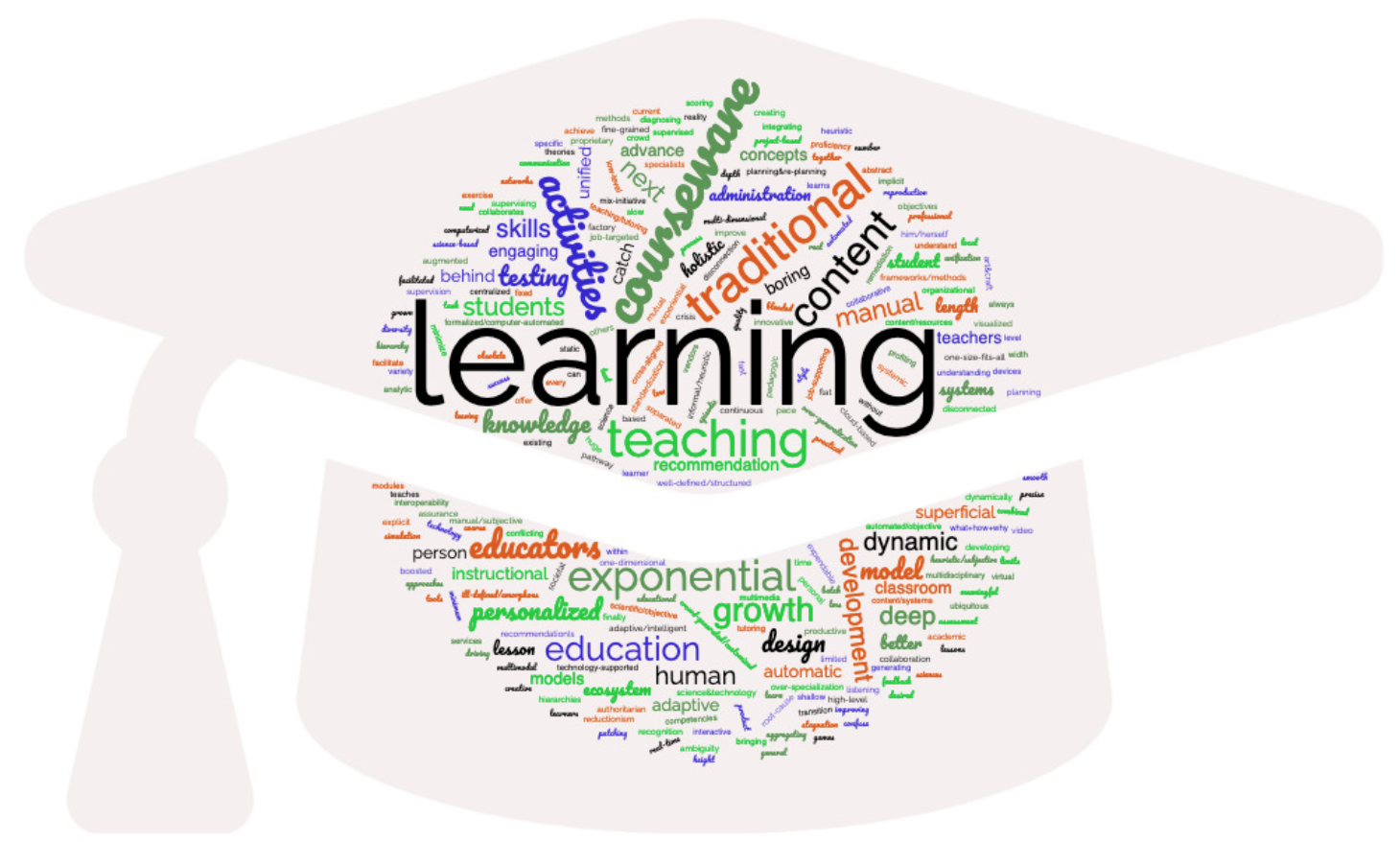Dimensions of the Education System Transformation:
- from ubiquitous Reductionism to a Holistic model of Education Ecosystem
- from traditional Patching of the existing obsolete Factory Model of education to creating an innovative, Science-based, and Technology-supported Model of Education
- from a huge variety of conflicting pedagogic concepts, approaches, and theories, which confuse educators, to a minimum of unified concepts, models, methods, and tools, which minimize traditional ambiguity and facilitate better communication, mutual understanding, and collaboration of educators
- from manual Art&Craft of teaching to a computerized Science&Technology Ecosystem of Education
- from diversity and disconnection of proprietary content/systems to their unification, standardization, and interoperability
- from local devices to cloud-based systems and services
- from traditional Classroom to multimodal Blended Learning
- from classroom Superficial Administration to Deep Supervision of learning facilitated by science and technology
- from One-Size-Fits-All to Adaptive Personalized teaching
- from Heuristic/Subjective to Scientific/Objective Instructional Design
- from Implicit to Explicit and Visualized Models of Courseware
- from ill-defined/amorphous Content/Resources to well-defined/structured Learning Activities
- from disconnected “What”, “How”, and “Why” to a holistic “What+How+Why” of the learning process
- from flat Learning Activities to a hierarchy of cross-aligned Learning, Instructional, Professional, Organizational and Societal Activities
- from heuristic aggregating of courseware in modules and hierarchies to meaningful systemic integrating of courseware in networks expendable in depth, width, and height without limits
- from Specific to Unified courseware based on general frameworks/methods of multidisciplinary sciences
- from Manual/Subjective to Automated/Objective design of courseware
- from a Manual planning of lessons by teachers in advance to Automatic Dynamic planning&re-planning of teaching/tutoring in real time
- from manual or automated design of a static “personalized pathway” for each student in advance, to automatic generating of real-time dynamic recommendation(s) on what to do next to better achieve all desired learning objectives
- from coarse recommendation of the next lesson to learn to fine-grained recommendation of the next learning, exercise or testing task within each lesson.
- from assessment by the One-dimensional Scoring to Dynamic Multi-dimensional Profiling of current Proficiency, Competencies, Skills, …
- from traditional Batch testing with fixed length to Dynamically Adaptive testing with personalized length
- from traditional Shallow Feedback to deep Root-Cause Diagnosing and precise Remediation
- from the authoritarian teaching style to mix-initiative, experiential, project-based, collaborative learning
- from informal/heuristic to formalized/computer-automated Quality Assurance
- from leaving slow students behind and fast students boring to engaging and driving Every Student to 100% Success in their personal pace
- from traditional LMS for superficial administration to Adaptive/Intelligent Tutoring Systems for deep supervising of learning
- from Centralized content development to learner crowd-generated/customized content supervised by teachers
- from a low productive courseware development by a limited number of specialists (who are always behind the exponential growth of human knowledge) to the exponential growth of courseware development boosted by a crowd of learners (to catch with the exponential growth of human knowledge)
- from an abstract academic Content to practical job-targeted and job-supporting Learning Activities
- from over-Generalization and over-Specialization to smooth transition between them
- from boring text to engaging interactive multimedia, simulation, video, games, virtual, and augmented reality
- from Episodic to Continuous learning
- from learning of low-level skills (recognition, reproduction) to learning of high-level skills level (analytic and creative)
- from separated learning by students and teaching by educators to learning and teaching combined in each person; each person learns by him/herself, collaborates in improving and developing content, and teaches others
- from stagnation and crisis to the exponential growth of educational content and activities to catch with the exponential grown of human knowledge
- from listening only vendors about what they offer and only educators about what they need to bringing them together to finally understand what that product can do to improve teaching and learning.
Back to Home page
